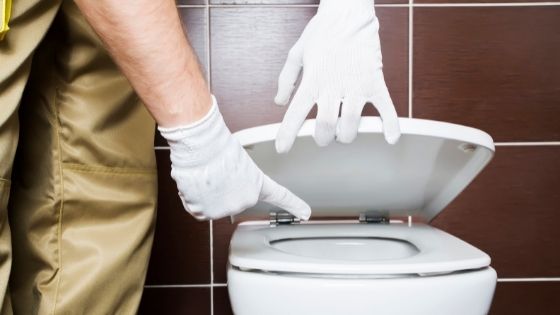One of the most peaceful spots you can be at home is at the toilet. It’s where you can spend your time alone quietly while you take care of your business. That’s why when it starts to act up and show signs of problems, it can be such a hassle for many.
A common home toilet consists of 2 main parts: the bowl and the tank. The first one is no more than a big piece of porcelain drain fixture where you sit on. Meanwhile, the second is where the important valves and the handle that starts the flush action are located. With plenty of moving parts inside, it’s more likely to develop problems that need immediate repairs.
But before you call a plumbing company to help you with your toilet plumbing problems, you can try fixing them yourself. After all, there are different ways to fix common issues, and many of them are quite easy. To get things started, here are some common toilet problems and how to solve them:
Slugging Flush
When flushing, it’s crucial for the water to move quickly since it is the key to creating a suction in the pipe to eliminate waste. A sluggish flow hampers the process altogether. This is often due to a chain that’s not connected properly on the flush flapper or lever. This causes the toilet flapper to not fully open and let water through the valve.
Solution:
When you push the flush handle, the lever should pull the chain to open the flapper and let the water through. If you think that it’s not working properly when you use the toilet, open the tank to access the mechanism inside. That way, you can identify the issues with the chain. If it’s corroded, replace it immediately. But sometimes, the problem is only a loose link. In this case, simply reattach the chain to the lever or flush flapper.
Clogged Toilet
Having a clog in your toilet will hinder the water from going down smoothly. This is usually caused by disposing of certain things that shouldn’t be flushed down, like food, cotton products, paper towels, and cigarette butts.
Although your toilet is a modern-day convenience for taking care of human waste, they’re not great at getting rid of other stuff. Even small and seemingly harmless items don’t only clog up the drain but also cause water contamination when they go down the toilet.
Solution:
Clogged toilets typically only need one tool: a plunger. Try to get one that has an extension flange on the end since it’s designed to fit toilets better. If you can’t find one, a traditional model will do.
Trap the water inside the plunger cup, then push it in to force the water down the drain. Try to keep enough water in the bowl so that the plunger stays submerged. Forcing air won’t generate much pressure. Make sure to start slowly and gently to avoid splashing everything around and making a mess. Also, be patient because it takes a few or more pumps to get rid of the clog.
Overflowing Toilet
Your toilet tank refills water on its own after you’ve flushed. Once it’s full, it will automatically stop. But sometimes, you’ll notice that it’s still filling up with water to the point where the tank or the bowl overflows. This results from one of 2 things: an improperly adjusted float that lets the tank overfill or a blocked drain that doesn’t allow a proper flush.
Solution:
A high filler float will let the water overflow out of the tank. You can solve this problem by simply adjusting the mechanism inside the tank to control the float’s level.
Meanwhile, it’s also quite easy to spot a clogged drain since the water will overflow from the bowl instead of the tank. You’ll only need a plunger to fix everything up, and then you’re good to go.
Remember, these toilet issues can be easily solved, and all you’ll need is a bit of patience and some elbow grease. That said, some problems should be left to the pros. Get in touch with the best plumbing company in your area if you suspect that you’re dealing with bigger toilet plumbing problems.

